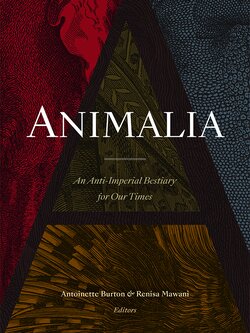From yaks and vultures to whales and platypuses, animals have played central roles in the history of British imperial control. The contributors to Animalia analyze twenty-six animals—domestic, feral, predatory, and mythical—whose relationship to imperial authorities and settler colonists reveals how the presumed racial supremacy of Europeans underwrote the history of Western imperialism. Victorian imperial authorities, adventurers, and colonists used animals as companions, military transportation, agricultural laborers, food sources, and status symbols. They also overhunted and destroyed ecosystems, laying the groundwork for what has come to be known as climate change. At the same time, animals such as lions, tigers, and mosquitoes interfered in the empire's racial, gendered, and political aspirations by challenging the imperial project’s sense of inevitability. Unconventional and innovative in form and approach, Animalia invites new ways to consider the consequences of imperial power by demonstrating how the politics of empire—in its racial, gendered, and sexualized forms—played out in multispecies relations across jurisdictions under British imperial control.

For better or worse, E.P. Thompson’s monumental book The Making of the English Working Class has played an essential role in shaping the intellectual lives of generations of readers since its original publication in 1963. This collected volume explores the complex impact of Thompson’s book, both as an intellectual project and material object, relating it to the social and cultural history of the book form itself—an enduring artifact of English history.

In Hindutva as Political Monotheism, Anustup Basu offers a genealogical study of Hindutva—Hindu right-wing nationalism—to illustrate the significance of Western anthropology and political theory to the idea of India as a Hindu nation. Connecting Nazi jurist Carl Schmitt's notion of political theology to traditional theorems of Hindu sovereignty and nationhood, Basu demonstrates how Western and Indian theorists subsumed a vast array of polytheistic, pantheistic, and henotheistic cults featuring millions of gods into a singular edifice of faith. Basu exposes the purported “Hindu Nation” as itself an orientalist vision by analyzing three crucial moments: European anthropologists’ and Indian intellectuals’ invention of a unified Hinduism during the long nineteenth century; Indian ideologues’ adoption of ethnoreligious nationalism in pursuit of a single Hindu way of life in the twentieth century; and the transformations of this project in the era of finance capital, Bollywood, and new media. Arguing that Hindutva aligns with Enlightenment notions of nationalism, Basu foregrounds its significance not just to Narendra Modi's right-wing, anti-Muslim government but also to mainstream Indian nationalism and its credo of secularism and tolerance.

This companion provides a guide to queer inquiry in literary and cultural studies. The essays represent new and emerging areas, including transgender studies, indigenous studies, disability studies, queer of color critique, performance studies, and studies of digital culture. Rather than being organized around a set of literary texts defined by a particular theme, literary movement, or demographic, this volume foregrounds a queer critical approach that moves across a wide array of literary traditions, genres, historical periods, national contexts, and media. This book traces the intellectual and political emergence of queer studies, addresses relevant critical debates in the field, provides an overview of queer approaches to genres, and explains how queer approaches have transformed understandings of key concepts in multiple fields.

Sex, Love, and Gender is the first volume to present a comprehensive philosophical theory that brings together all of Kant's practical philosophy — found across his works on ethics, justice, anthropology, history, and religion — and provides a critique of emotionally healthy and morally permissible sexual, loving, gendered being. By rethinking Kant's work on human nature and making space for sex, love, and gender within his moral accounts of freedom, the book shows how, despite his austere and even anti-sex, cisist, sexist, and heterosexist reputation, Kant's writings on happiness and virtue (Part I) and right (Part II) in fact yield fertile philosophical ground on which we can explore specific contemporary issues such as abortion, sexual orientation, sexual or gendered identity, marriage, trade in sexual services, and sex- or gender-based oppression. Indeed, Kant's philosophy provides us with resources to appreciate and value the diversity of human ways of loving and the existential importance of our embodied, social selves. Structured on a thematic basis, with introductions to assist those new to Kant's philosophy, this book will be a valuable resource for anyone who cares about these issues and wants to make sense of them.
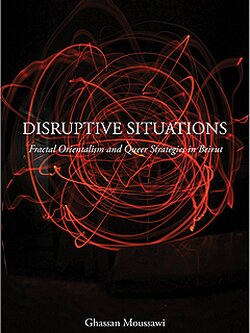
Disruptive Situations challenges representations of contemporary Beirut as an exceptional space for LGBTQ people by highlighting everyday life in a city where violence is the norm. Ghassan Moussawi, a Beirut native, seeks to uncover the underlying processes of what he calls “fractal orientalism,” a relational understanding of modernity and cosmopolitanism that illustrates how transnational discourses of national and sexual exceptionalism operate on multiple scales in the Arab world.
Moussawi’s intrepid ethnography features the voices of women, gay men, and genderqueer persons in Beirut to examine how queer individuals negotiate life in this uncertain region. He examines “ al-wad’,” or “the situation,” to understand the practices that form these strategies and to raise questions about queer-friendly spaces in and beyond Beirut.
Disruptive Situations also shows how LGBTQ Beirutis resist reconciliation narratives and position their identities and visibility at different times as ways of simultaneously managing their multiple positionalities and al-wad’. Moussawi argues that the daily survival strategies in Beirut are queer—and not only enacted by LGBTQ people—since Beirutis are living amidst an already queer situation of ongoing precarity.
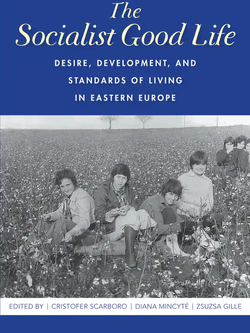
What does the good life mean in a "backward" place? As communist regimes denigrated widespread unemployment and consumer excess in Western countries, socialist Eastern European states simultaneously legitimized their power through their apparent ability to satisfy consumers' needs. Moving beyond binaries of production and consumption, the essays collected here examine the lessons consumption studies can offer about ethnic and national identity and the role of economic expertise in shaping consumer behavior. From Polish VCRs to Ukrainian fashion boutiques, tropical fruits in the GDR to cinemas in Belgrade, The Socialist Good Life explores what consumption means in a worker state where communist ideology emphasizes collective needs over individual pleasures.
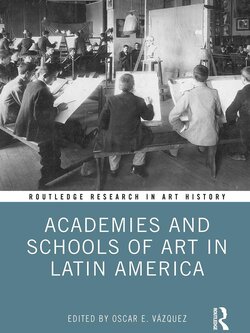
This edited volume’s chief aim is to bring together, in an English-language source, the principal histories and narratives of some of the most significant academies and national schools of art in South America, Mexico, and the Caribbean, from the late 18th to the early 20th centuries.
The book highlights not only issues shared by Latin American academies of art but also those that differentiate them from their European counterparts. Authors examine issues including statutes, the influence of workshops and guilds, the importance of patronage, discourses of race and ethnicity in visual pedagogy, and European models versus the quest for national schools. It also offers first-time English translations of many foundational documents from several significant academies and schools.
This book will be of interest to scholars in art history, Latin American and Hispanic studies, and modern visual cultures.
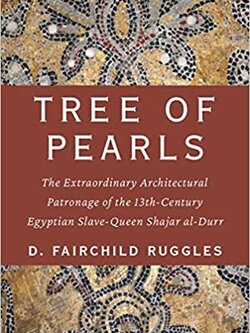
The woman known as “Tree of Pearls” ruled Egypt in the summer of 1250. A rare case of a woman sultan, her reign marked the shift from the Ayyubid to the Mamluk dynasty, and her architectural patronage of two building complexes had a lasting impact on Cairo and on Islamic architecture. Rising to power from slave origins, Tree of Pearls—her name in Arabic is Shajar al-Durr—used her wealth and power to add a tomb to the urban madrasa (college) that had been built by her husband, Sultan Salih, and with this innovation, madrasas and many other charitably endowed architectural complexes became commemorative monuments, a practice that remains widespread today. This was the first occasion in Cairo in which a secular patron’s relationship to his architectural foundation was reified through the actual presence of his body. The tomb thus profoundly transformed the relationship between architecture and its patron, emphasizing and emblematizing his historical presence. Indeed, the characteristic domed skyline of Cairo that we see today is shaped by such domes that have kept the memory of their named patrons visible to the public eye. This dramatic transformation, in which architecture came to embody human identity, was made possible by the sultan-queen Shajar al-Durr, a woman who began her career as a mere slave-concubine. Her path-breaking patronage contradicts the prevailing assumption among historians of Islam that there was no distinctive female voice in art and architecture.

Ancient Greek ethnographies—descriptions of other peoples—provide unique resources for understanding ancient environmental thought and assumptions, as well as anxieties, about how humans relate to nature as a whole. In Other Natures, Clara Bosak-Schroeder examines the works of seminal authors such as Herodotus and Diodorus Siculus to persuasively demonstrate how non-Greek communities affected and were in turn deeply affected by their local animals, plants, climate, and landscape. She shows that these authors used ethnographies of non-Greek peoples to explore, question, and challenge how Greeks ate, procreated, nurtured, collaborated, accumulated, and consumed. In recuperating this important strain of ancient thought, Bosak-Schroeder makes it newly relevant to vital questions and ideas being posed in the environmental humanities today, arguing that human life and well-being are inextricable from the life and well-being of the nonhuman world. By turning to such ancient ethnographies, we can uncover important models for confronting environmental crisis.
